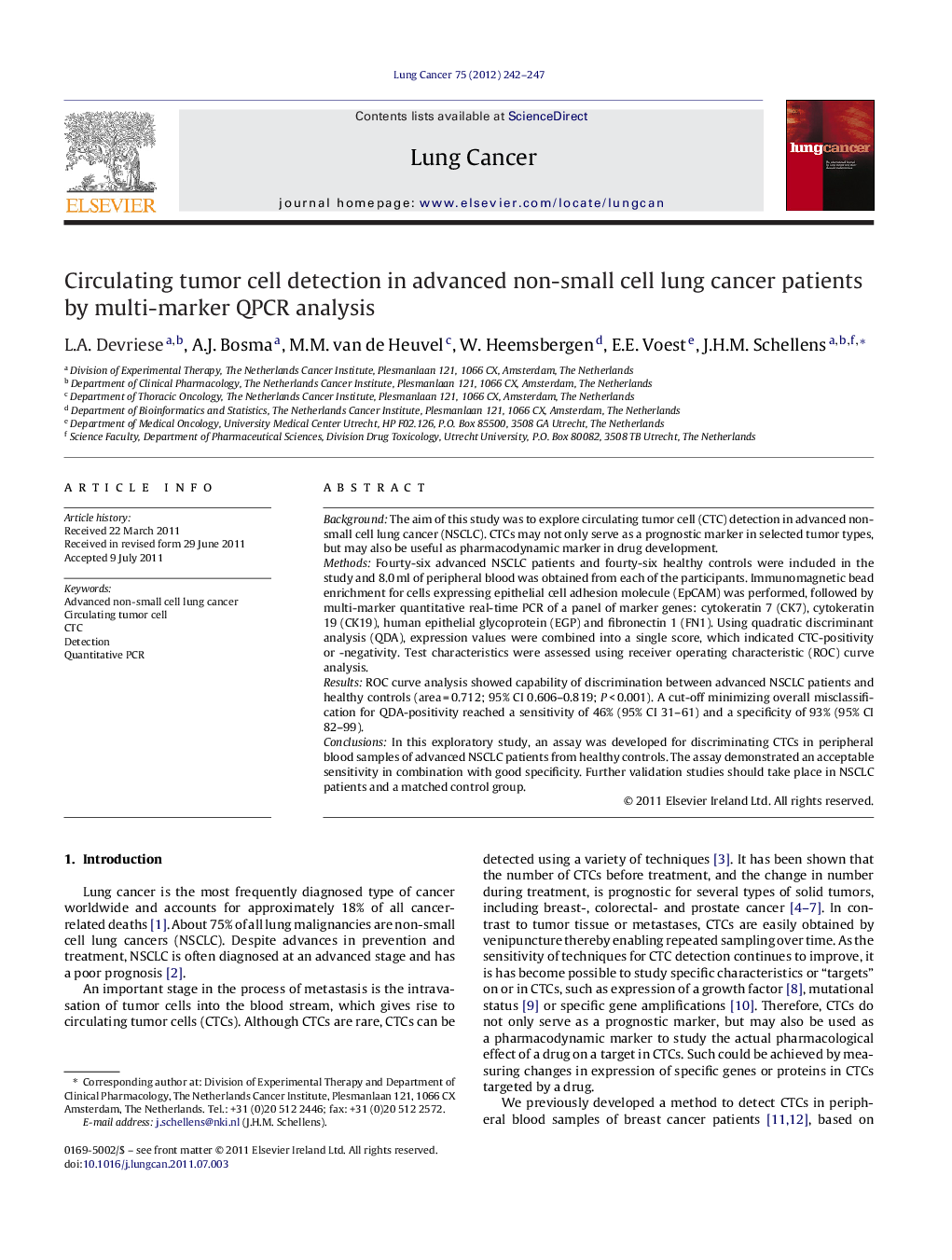| Article ID | Journal | Published Year | Pages | File Type |
|---|---|---|---|---|
| 2141783 | Lung Cancer | 2012 | 6 Pages |
BackgroundThe aim of this study was to explore circulating tumor cell (CTC) detection in advanced non-small cell lung cancer (NSCLC). CTCs may not only serve as a prognostic marker in selected tumor types, but may also be useful as pharmacodynamic marker in drug development.MethodsFourty-six advanced NSCLC patients and fourty-six healthy controls were included in the study and 8.0 ml of peripheral blood was obtained from each of the participants. Immunomagnetic bead enrichment for cells expressing epithelial cell adhesion molecule (EpCAM) was performed, followed by multi-marker quantitative real-time PCR of a panel of marker genes: cytokeratin 7 (CK7), cytokeratin 19 (CK19), human epithelial glycoprotein (EGP) and fibronectin 1 (FN1). Using quadratic discriminant analysis (QDA), expression values were combined into a single score, which indicated CTC-positivity or -negativity. Test characteristics were assessed using receiver operating characteristic (ROC) curve analysis.ResultsROC curve analysis showed capability of discrimination between advanced NSCLC patients and healthy controls (area = 0.712; 95% CI 0.606–0.819; P < 0.001). A cut-off minimizing overall misclassification for QDA-positivity reached a sensitivity of 46% (95% CI 31–61) and a specificity of 93% (95% CI 82–99).ConclusionsIn this exploratory study, an assay was developed for discriminating CTCs in peripheral blood samples of advanced NSCLC patients from healthy controls. The assay demonstrated an acceptable sensitivity in combination with good specificity. Further validation studies should take place in NSCLC patients and a matched control group.
